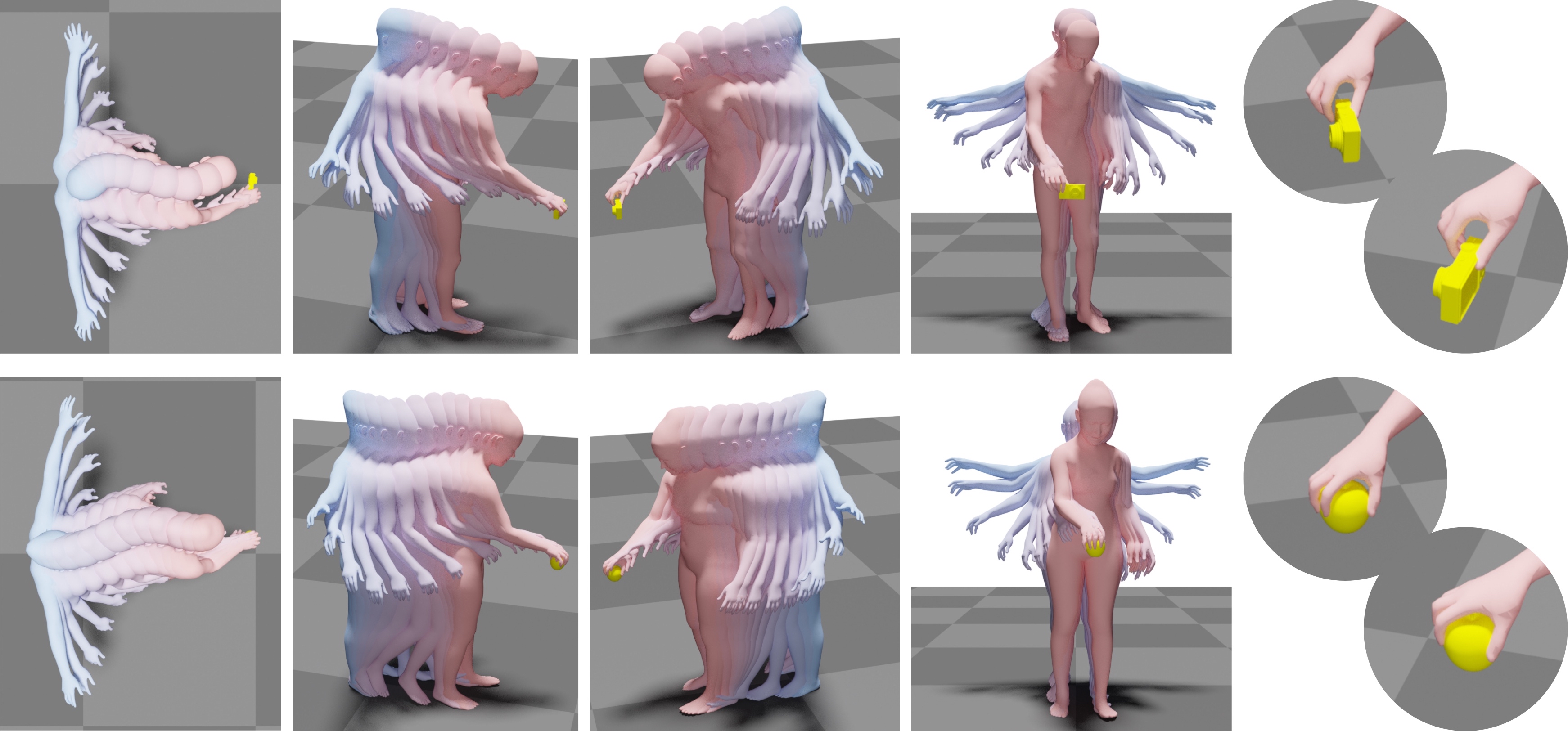GOAL: Generating 4D Whole-Body Motion for Hand-Object Grasping

Abstract
Video
Data and Code
Please register and accept the License Agreement on this website to access the GOAL models.
When creating an account, please opt-in for email communication, so that we can reach out to you via email to announce potential significant updates.
- GNet and MNet model files/weights (works only after sign-in)
- Code for GOAL (GitHub)
Referencing GOAL
@inproceedings{taheri2021goal,
title = {{GOAL}: {G}enerating {4D} Whole-Body Motion for Hand-Object Grasping},
author = {Taheri, Omid and Choutas, Vasileios and Black, Michael J. and Tzionas, Dimitrios},
booktitle = {Conference on Computer Vision and Pattern Recognition ({CVPR})},
year = {2022},
url = {https://goal.is.tue.mpg.de}
}
@inproceedings{GRAB:2020,
title = {{GRAB}: {A} Dataset of Whole-Body Human Grasping of Objects},
author = {Taheri, Omid and Ghorbani, Nima and Black, Michael J. and Tzionas, Dimitrios},
booktitle = {European Conference on Computer Vision ({ECCV})},
year = {2020},
url = {https://grab.is.tue.mpg.de}
}Disclaimer
MJB has received research gift funds from Adobe, Intel, Nvidia, Facebook, and Amazon. While MJB is a part-time employee of Amazon, his research was performed solely at, and funded solely by, Max Planck. MJB has financial interests in Amazon, Datagen Technologies, and Meshcapade GmbH.
Acknowledgments
This research was partially supported by the International Max Planck Research School for Intelligent Systems (IMPRS-IS) and the Max Planck ETH Center for Learning Systems (CLS).
This work was supported by the German Federal Ministry of Education and Research (BMBF): Tubingen AI Center, FKZ: 01IS18039B.
We thank:
- Tsvetelina Alexiadis for the Mechanical Turk experiments.
- Taylor McConnell for the voice recordings.
- Joachim Tesch for the help with renderings.
- Benjamin Pellkofer for website design, IT, and web support.
Contact
For questions, please contact goal@tue.mpg.de.
For commercial licensing, please contact ps-licensing@tue.mpg.de.